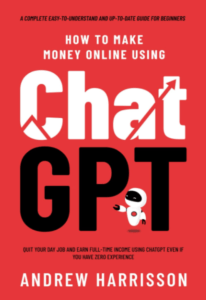What Is Passive Income Online Vs Active Income?
Podcast : Passive v Active Income (10:53)
Passive and active income are two sides of the same coin really when it comes to making money online.
Both approaches have their unique features and benefits, and understanding these can help you make informed decisions about your financial future.
Passive income refers to earnings generated with minimal effort.
Think of it as money that comes in even when you’re not actively working, even in your sleep.
This can include royalties from writing a book, dividends from investments, or revenue from owning rental properties.
Online, it often takes the form of affiliate marketing, selling online courses, or digital products like eBooks.
On the flip side, active income requires your direct involvement or labour to earn money.
This is the income you get from completing tasks, providing services, or selling products in real-time.
Freelancing, consulting, and running an online store are classic examples of active income sources.
Understanding the difference between passive and active income is crucial because it impacts how you allocate your time and energy.
While passive income might free up more time in the long run, it often requires a significant initial investment of time or money.
Active income, though more immediately rewarding, can consume a lot of your daily life.
Exploring the various income streams available online can open up new opportunities.
Whether you’re thinking about diversifying your earning methods or just starting out, knowing the ins and outs of passive and active income can set you on the right path.
Understanding Passive Income
Passive income is like planting seeds that grow into money trees with a little care.
You do some work upfront, and it keeps paying you over time.
So, what actually counts as passive income?
It’s income that requires little to no daily effort to maintain.
Online, popular passive income sources are everywhere. You’ve got affiliate marketing, where you promote products and earn a commission on sales.
There’s also creating and selling digital products like eBooks or online courses.
Then, there’s investing in stocks or peer-to-peer lending platforms. Each of these requires an initial effort, but they have the potential to bring in ongoing revenue.
Of course, passive income has its pros and cons. On the plus side, it’s nice to earn money without constantly grinding.
It gives you more freedom and can be a great way to build wealth over time.
But, don’t get it twisted—it’s not a free ride.
Setting up these income streams can be time-consuming and might need some upfront capital.
Common myths?
Oh, they’re plenty!
Some folks think passive income means you won’t ever have to work again.
Reality check: even passive income streams need a bit of maintenance.
Whether it’s updating a course, writing new content, or keeping an eye on your investments, there’s usually some ongoing involvement.
However, the effort is typically far less than what’s needed for active income.
Understanding Active Income
Active income is like hustling in real-time. It’s what you make when you’re directly involved in your work.
This could be freelancing, consulting, or even running an online store.
If you’re a graphic designer working on client projects, or a social media manager, you’re earning active income.
You are trading your time directly for money.
There are plenty of active income streams online. Freelancing platforms like Upwork and Fiverr connect you with clients needing all sorts of services.
Virtual assistant jobs are another example, where you handle tasks for businesses or entrepreneurs.
Then, there’s e-commerce. Running an online shop on platforms like Etsy or Shopify is a classic way to earn active income.
Every sale you make requires effort—from setting up the store to fulfilling customer orders (unless it’s an affiliate store).
Active income has its perks. It’s straightforward—work done equals payment received. You often get immediate earnings, which can be satisfying.
Plus, there’s usually ample opportunity for client interaction, which can be rewarding in itself.
But it’s not all sunshine and roses….
Active income comes with challenges, too. It often demands a lot of your time and energy.
The earning potential is directly tied to how much you work. This can lead to burnout (and family conflict) if you’re not careful.
Also, there’s less security. If you’re not working, you’re not earning. It can be unpredictable, unlike a steady paycheck you might get from a traditional job.
Comparing active income to traditional employment, the big difference lies in flexibility and control.
With active income, you often have more freedom in choosing projects and clients, but the trade-off is a lack of stability.
Key Differences Between Passive and Active Income
The core distinction between passive and active income is the time investment.
Passive income demands an initial push—you set up a system, and then it mostly runs on its own. Active income, meanwhile, needs continuous daily effort.
You put in the hours to get paid.
Income stability also varies significantly. Passive income may be less predictable initially as you’re building it up, but it can become more stable once established.
Active income provides more immediate security, but if you stop working, the cash flow stops too.
Scalability is another major difference.
Passive income has the potential to grow exponentially with the same or decreasing effort over time.
Think about writing a best-selling eBook or building a popular online course—revenue could grow as more people buy it without additional work from you.
In contrast, active income scalability is limited by your availability and energy. There are only so many hours you can work in a day.
Each type of income comes with its own risk factors.
Passive income might require a financial investment that’s not guaranteed to pay off.
You could spend a lot of time creating a product or setting up an income stream that doesn’t see much return.
Active income has its risks too—losing a major client or facing periods without work can be stressful and impact your financial stability.
Understanding these differences can help you decide which income type aligns with your goals, availability, and risk tolerance.
Both can be part of a balanced income strategy, offering short-term gains and long-term growth as you navigate the online earning world.
Choosing the Right Income Stream for You
Choosing the right income stream starts with knowing yourself. What are your personal goals?
Do you want more free time, or are you looking to maximize your earnings?
Your lifestyle plays a big role, too.
If you value flexibility, passive income might be more appealing. If you thrive on daily tasks and client interaction, active income could be the way to go.
Assessing your initial resources and skills is crucial.
Passive income often requires an upfront investment of time, money, or both.
Do you have the patience and resources to build an online course or write an eBook?
For active income, think about your skills and how you can market them. Are you a good writer, designer, or a digital marketer?
These skills can be turned into active income streams through freelancing or consulting.
Combining both types of income can offer the best of both worlds.
You can have the stability of active income while building up passive income streams on the side.
For instance, you might work as a freelancer (active income) while developing a blog that earns through affiliate marketing (passive income).
This strategy diversifies your revenue and hedges against the risk of relying on a single income source.
Long-term planning is key to sustaining and growing your income.
Passive income streams might take longer to set up, but they can provide significant rewards over time.
Active income streams, although more immediate, require ongoing effort. Set realistic goals and timelines for both short-term gains and long-term growth.
Always be ready to pivot your strategy based on what’s working and what’s not.
Ultimately, the best income stream is one that aligns with your goals, skills, and lifestyle.
Whether you choose passive income, active income, or a mix of both, having a clear understanding and strategic approach can lead to financial stability and growth.
Visited 8 times




